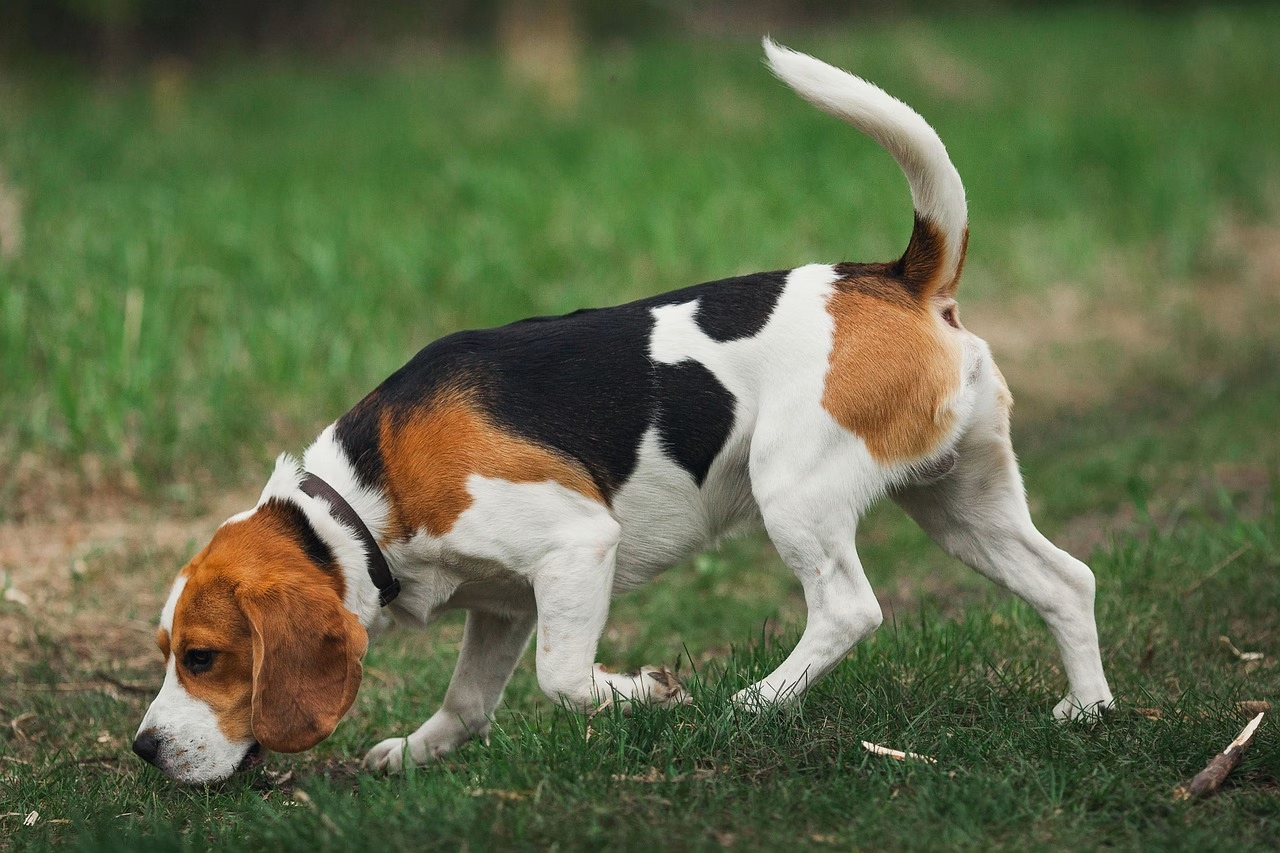If you’ve ever watched your dog’s nose twitch wildly on a walk, you’ve seen pure joy in action. For dogs, sniffing is more than curiosity, it’s their way of reading the world. But what happens when you can’t take your dog on long walks every day? Enter the Sniffari: a homemade nose-work trail that turns your living room, backyard, or hallway into an adventure zone.
This guide will show you how to build a safe, vet-approved Sniffari at home, so your dog can unleash their inner tracker without stepping outside.
Why Nose Work Matters
Dogs experience life primarily through scent. While humans rely on sight, a dog’s nose is their superpower. Researchers estimate dogs have up to 300 million scent receptors (compared to our 5 million), making them capable of detecting smells at parts per trillion.
In the wild, wolves spend hours sniffing trails, hunting prey, or exploring new territories. Domestic dogs inherit that instinct, but modern life often limits their opportunities. Without scent work, dogs can get bored, anxious, or restless.
Providing structured sniffing activities:
- Reduces stress by giving dogs a natural outlet.
- Builds confidence in shy or anxious dogs.
- Burns mental energy, which can be just as tiring as physical exercise.
- Strengthens your bond by turning you into a scent-game partner.
Related: Why Do Dogs Get Zoomies? The Wild Canine Energy Burst You Can Channel Safely.
What Exactly Is a Sniffari?
A Sniffari is like a safari for your dog’s nose. Instead of observing animals, your dog explores smells. In outdoor walks, a Sniffari means letting them stop, sniff, and lead the way. At home, you recreate the same idea by creating scent trails and hidden treasures for your dog to discover.
Think of it as a mix between hide-and-seek, puzzle solving, and treasure hunting — designed for paws and noses.
Safety First: Vet-Safe Rules
Before setting up a Sniffari, safety is key. Not all items are safe for dogs to sniff or eat. Follow these guidelines:
- Use edible rewards wisely: Stick to healthy, vet-approved treats or kibble. Avoid foods like chocolate, grapes, onions, or anything toxic to dogs.
- No sharp or choking hazards: Keep glass, pins, and tiny toys out of the trail.
- Choose safe surfaces: Carpets, grass, or mats are ideal. Avoid slick floors where your dog could slip.
- Supervise play: Always watch your dog during a Sniffari to prevent overeating or chewing non-food items.
How to Build a DIY Nose-Work Trail
Here’s a simple, step-by-step way to turn your home into a scent adventure:
Step 1: Choose Your “Scent Zone”
Pick a safe, quiet space. A hallway, living room, or fenced yard works well. The key is minimal distractions, so your dog focuses on the task.
Step 2: Gather Your Tools
- A few favorite treats or kibble pieces.
- Cardboard boxes, plastic cups, or old towels.
- A toy with strong scent (like a well-loved ball).
Step 3: Create Scent Stations
Hide treats in safe, reachable places:
- Under an upside-down plastic cup.
- Tucked in a folded towel.
- Inside a cardboard box with holes for airflow.
Step 4: Lay a Trail
Drag a treat along the ground to create a scent path, leading your dog toward a reward. Start simple with short paths, then make them longer and more challenging.
Step 5: Release the Explorer
Guide your dog to the start, then let them lead. Use encouraging phrases like “find it!” but avoid giving too many hints. The joy is in letting their nose take charge.
Making It More Challenging
Once your dog masters the basics, level up the Sniffari:
- Multiple trails: Create two or three scent paths that cross, testing their ability to choose the right one.
- Non-food targets: Hide a favorite toy instead of treats.
- Vertical challenges: Place scents on low shelves or stools (never too high to cause jumping injury).
The goal is to mimic the complexity of the wild, new paths, new scents, new puzzles.
Why Sniffaris Calm the Wild Within
From a wolf’s point of view, sniffing was survival: finding prey, detecting danger, or locating packmates. Domestic dogs still carry that wiring. When you give them a Sniffari, you’re not just providing entertainment, you’re letting them live out their wild roots safely at home.
This natural enrichment can prevent destructive behaviors like chewing or digging, and it channels energy into a positive, brain-fueling activity.
Related: Natural Feeding Routines for Dogs Based on Wolf Packs.
A Real-Life Story: Bella’s First Sniffari
Bella, a two-year-old Labrador, lived in an apartment with limited outdoor space. Her owners noticed she was restless, often pacing at night. After setting up a simple Sniffari with cups and treats, they saw an immediate change.
Instead of pacing, Bella spent 20 minutes happily exploring the trail, wagging her tail with every discovery. By the end, she was calm, satisfied, and ready for a nap.
Her vet later confirmed that nose-work activities had reduced her stress and helped her lose a little weight, proof that Sniffaris can make a measurable difference.
The Last Scent Trail
A Sniffari is more than a game. It’s a way to connect your dog’s modern life to their wild past, providing mental stimulation, emotional comfort, and physical activity in one. By setting up a simple trail at home, you’re not only giving them fun, you’re helping them thrive.
So the next time your dog’s nose twitches with curiosity, give it a challenge. A safe, homemade Sniffari might just become their favorite adventure.



One thought on “DIY Sniffari: Build a Home Nose-Work Trail (Vet-Safe)”